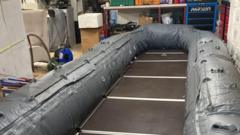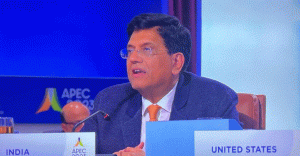
An Jae-hyun, CEO of Stockeeper / Courtesy of Stockeeper Startup innovates livestock ecosystem, from farming to consumption By Jun Ji-hye An Jae-hyun, the young entrepreneur and CEO of Stockeeper, launched the country’s first livestock fractional investment platform Bankcow in 2021, allowing people to make small investments in Korean cattle, known as hanwoo. Fractional investing is a contemporary investment approach that enables investors to combine their funds and collectively invest in high-value assets, such as real estate, stocks, bonds, artwork and livestock. The Korean startup received approval in June from the Financial Supervisory Service, the financial watchdog, to issue the investment contract securities, becoming the first to issue such a product for a living asset.
“Investing in livestock is not a zero-sum game where one party gains and the other loses. It holds social value, as profits are shared collectively and risks are distributed among all participants,” An said during a recent interview with The Korea Times. On the Bankcow platform, people can choose to invest in hanwoo with amounts ranging from as low as 40,000 won ($30) to as much as 5 million won.
This provides funds to ranches for raising hanwoo calves for about two years. Once the calves grow into adults, the auction profits are distributed between the farms and the investors. The number of calves raised by the platform is now over 2,000.
Currently, there are approximately 3.3 million hanwoo cattle being raised in Korea. Calves and adult cattle that are ready for slaughter are sold for between 8 million won and 10 million won.
This represents a substantial market, with annual transaction volumes nearing 22 trillion won. Unlike art, which depends on subjective appraisal, livestock investments allow for quantitative evaluation through the indexing of cattle growth and pricing, An noted. Even if market prices decline, this investment offers the advantage of an easy exit, providing flexibility for investors.
“Every day, thousands of cattle are auctioned, and the auction results are transmitted to the Ministry of Agriculture, Food and Rural Affairs. This data is then indexed, recording the cattle’s grade and auction price, which becomes publicly available. As a result, the cattle price is determined objectively, allowing customers to verify fair market values,” he said.
Regarding divestment concerns, An explained that assets that are not easily liquidated in the market often have lengthy exit periods. For example, art typically requires about 10 years to exit, during which early withdrawal is not an option. “Long exit periods make investment challenging, especially if the price drops, as investors may end up buying at a high price without being able to exit,” he said.
“On the other hand, cattle are assets that are ultimately consumed in the market. Even if prices fall, the constant consumption ensures that investors can eventually exit with some recovery of their principal.” Cattle at a hanwoo ranch / Courtesy of Stockeeper Stockeeper successfully completed offering its investment contract securities 1-1 and 1-2 in June and July, achieving subscription rates exceeding 200 percent.
The offering for 2-1, which started on Oct. 14, has continued this trend of success, with a subscription rate surpassing 100 percent in just two days. Following the 2-1 offering, the company plans to sequentially launch 2-2 and 2-3 by December.
This second tranche of the investment contract securities represents profit rights for 131 calves aged 19 to 20 months, sourced from a farm located at Hwasanin in North Jeolla Province, known as a renowned producer of hanwoo. Investor protection As fractional investing is the new securities market, financial authorities have adopted a conservative approach, placing a high priority on investor protection principles. In response, Stockeeper has prepared several systems to protect investors.
“There was a requirement to avoid placing customer deposits into the company’s corporate account and instead to deposit them with external financial institutions. Thus, we established a system in collaboration with NH NongHyup Bank and Shinhan Securities to create an account management entity that safely holds customer deposits,” An said. “In the event of diseases like foot-and-mouth disease or lumpy skin disease that necessitate culling, the government provides full compensation.
Despite this, we established an investor protection fund because we understand that investors may feel anxious when cattle die. Therefore, we designed a structure where we first return money to investors from the investor protection fund, and then we collect the compensation from the government afterward.” An underscored that investments through the Bankcow platform help farms establish a solid foundation for healthy growth and increase their cattle stock.
This process allows them to create economies of scale, improve productivity and reduce production costs. In addition to investing in farming, Stockeeper has expanded into hanwoo production and processing, as well as into direct sales and distribution. By creating pipelines across each value chain, the firm is seeking to innovate the livestock ecosystem from farming to consumption.
“In this universe where supply and demand chains coexist, I aim to create an environment where farms can receive fair returns while consumers also can purchase hanwoo without financial burden. This will lead to much cheaper consumption of hanwoo,” he said. “I believe that innovation should be pursued on a broad scale.
To achieve this, I am undertaking the challenging task of controlling both the beginning and the end of the hanwoo market, driving innovation throughout the entire process.”.














